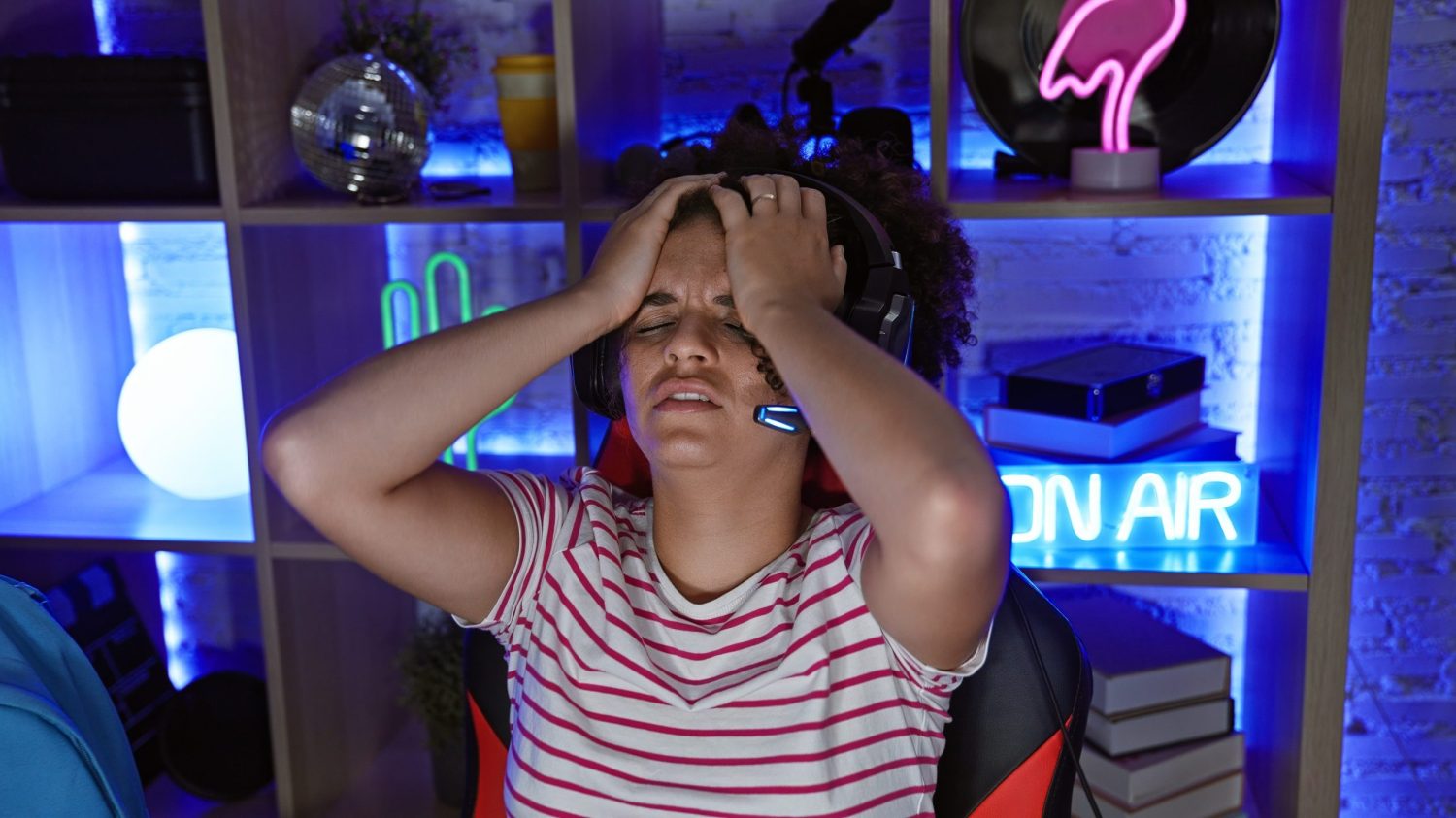Inaugural Editorial: A Lighthouse for Games and Playable Media
ACM Games: Research and Practice wants to help readers orient themselves in this ever-shifting reality of games industry and games research.
Abstract
In games and playable media, almost nothing is as it was at the turn of the millennium. Digital and analog games have exploded in reach, diversity, and relevance. Digital platforms and globalisation have shifted and fragmented their centres of gravity and how they are made and played. Games are converging with other media, technologies, and arts into a wide field of playable media. Games research has similarly exploded in volume and fragmented into disciplinary specialisms. All this can be deeply disorienting. ACM Games: Research and Practice (GAMES) wants to offer a lighthouse that helps readers orient themselves in this new, ever-shifting reality of games industry and games research.
1. Introduction
Why a new journal on games? We have been asked this question numerous times in the past years, by editors we recruited, our publishers ACM and ETC Press, authors we approached, and by ourselves as we shaped what you now see before you. What need are we trying to serve? Simply put, we think that games, the games industry, and games research have drastically changed: they have become more diverse, multipolar, massively bigger and more differentiated. This has created a new need for orientation and communication across academia and industry.
When game studies were forming as a field in the early 2000s, the digital gaming industry was dominated by double- and triple-A console and PC studios and publishers from the Global North. They chiefly sold games as fixed products on CD/DVD to a self-identifying ‘gamer’ population likewise located in the Global North, which was seen as a coherent, mostly male adolescent demographic. Games were culturally suspect and not recognised as a worthwhile subject of study (beyond work warning of how they might “corrupt our young”). Hence, researchers interested in games as such banded into their own new interdisciplinary venues and organisations. Getting their work published was a struggle.
None of this is true any more.
1.1. The Gambrian Explosion.
In the two decades since, games have undergone a “Gambrian Explosion.” Coined by Will Wright,11 this term alludes to the biological Big Bang in the Cambrian Period, when life on Earth drastically diversified and all major families of complex species we know today emerged. The same has happened to games: More and more different people make and play more and more different games (and not-quite-games) than ever before. New technologies and cultures are continually and rapidly emerging, and the centres of gravity keep shifting.
Service games and microtransactions are now the industry watchwords. Digital platforms have transformed how games are financed (with crowdfunding, freemium, and emerging subscription models), how they are made (hybrid or fully remote, with suppliers across the globe, early access, open betas, and regular patches and updates over the full lifetime), how they are distributed (through online platforms), marketed (through digital ads, platforms, influencers), and played and appreciated (with digital spectatorship and online fandom an integral part).
Mobile games dominate. By some counts, they make up 83% (2.6 billion) of players and 53% (US$103 billion) of gaming revenues worldwide. 55% of the global player base resides in Asia Pacific. China is the single biggest games market in the world. Both the Middle East and Africa and Latin America have larger player populations than North America – and they are growing much faster as well.8
Meanwhile, casual and especially independent games have broadened and diversified what games are made, for whom, and by whom. ‘Gamer’ – and who gets to use that label – has become highly contested. In 2023, playing digital games does not characterise a singular coherent demographic group with shared backgrounds, tastes, preferences, and practices. The cultural status of games has shifted from a suspect or trivial leisure practice to a general recognition that “games matter”, to quote anthropologist T. L. Taylor.12 As games are increasingly becoming “the very social parlour itself” (Kimberley Voll),14 the spaces within which we commune, how we design these spaces becomes fraught with responsibility, but also opportunity for positive social impact. In the words of game designer Dan Cook, ethical game design could and should be a “design practice for social systems”.3 With this grown social relevance, we also see the rise of new and different social concerns, exemplified in some of the articles in this issue: Debates about video game violence are replaced by debates about equality, diversity, and inclusion in industry, games, and player communities; worker rights; consumer harms from microtransactions;16 games for social impact;6 games as vectors for misinformation, extremism, or toxicity;9 or the role of games in the climate crisis.5
We also see non-digital games rising and converging with digital games and other media formats, spanning the renaissance of role-playing and tabletop games in the West and the commercial explosion of Jubensha (murder mystery larp) in China. To give but one example, live-action roleplay (larp) designers and academics have developed design practices and concepts for embodied, performative, 360-degree pervasive play that are now being embraced by immersive theatre and augmented reality companies as well as educational and entertainment game designers, or theme park designers at Disney.17
Driven by needs for ever-more powerful and scaling graphics technologies for rendering and simulation and highly skilled developers, games are forming the vanguard of computer science and visual computing.10 Games are similarly recognised as essential training grounds and avant-garde industry for particularly creative and collaborative AI.13 And whatever will come of the “metaverse,” designing and researching persistent, shared virtual worlds has a lot to learn from MUDs, MOOs, and MMOPRGs, as Raph Koster7 outlines in his piece in this issue.
1.2. The Pyrrhic victory of game studies.
In parallel to the Gambrian Explosion, research on games and playable media has similarly massively expanded and diversified in the last 20 years. Once a niche that self-identified as a resolutely interdisciplinary field of game studies, games research is now established and welcomed in many ‘origin’ disciplines, like HCI, communication research, media psychology, computer graphics, or education. New special topic venues and organisations have risen, like the Annual Symposium on Computer-Human Interaction in Play (CHI PLAY), Motion in Games (MIG), Interactive 3D Graphics and Games (I3D), or the International Journal of Esports. But as a consequence, games research has been fragmenting into specialist fields that cater to disciplinary questions, often leaving earlier interdisciplinary ambitions behind – a Pyrrhic victory of game studies4 Meanwhile, university games programmes have grown in leaps and bounds, employing academics that are expected to teach transdisciplinary and applied game design and development – and yet publish in increasingly disciplinary venues to advance their careers.
And while games and playable media are expanding and diversifying across cultures, communities, forms, aesthetics, and materials, academic venues still often focus on digital console and PC games by and for the Global North. For instance, a scientometric analysis2 of game studies venues in their first 15 years found only 2% of papers considering mobile games; only two to six percent % of authors were based in Asia and another two to four percent in “different areas” (sic), with the rest based in the Global North. Organisations like DiGRA are making ardent strides to grow regional games research across the world. Venues like Analog Game Studies offer a counterbalance to the traditional emphasis on digital games. Communities like game production studies are trying to unpack the logic and impact of the shifting technological and economic bases of games. But importantly, they are themselves distinct sub-communities, not integrative centres for wider games research.
2. Our Vision
The Gambrian Explosion and the Pyrrhic victory of game studies share rapid expansion, fragmentation, and change – a Big Bang that replaces a single solid centre with more and more new, forming, expanding, and collapsing galaxies drifting apart. This poses a major barrier to communication and orientation between and within the two. From 2006 to 2010, game scholars Ian Bogost, Mia Consalvo, Jane McGonigal, and Michael Mateas offered an optimistic “game studies download” session at the annual Game Developer’s Conference, summarising key academic insights for an industry audience. Today, the idea that four scholars could easily compress “the” top 10 takeaways from “the” academic community for “the” industry seems madness. It is increasingly difficult to establish the state of the art on any given topic, or to find a home for applied or integrative work that makes a contribution to games. We want to change that.
With Games: Research and Practice, we want to create a new orientation point for the state of the art in games and playable media across academia and industry. We publish work that advances how we understand, make, and teach games and playable media – inclusive of any community, discipline, method, and media form. We foster dialogue between research and practice. We actively champion new and underrepresented voices in games and playable media. We embrace open science and scholarship. And we explore new forms of communication to reach writers and readers beyond the confines of academic publishing.
To achieve this vision, we have set five guiding principles for the coming years, documented in our charter:1
- Creating a home for games and playable media
- Connecting research and practice
- Championing diversity and inclusion
- Curating the state of the art
- Reaching across communities
2.1. A home for games and playable media.
Games are transmedia – they can be digital, physical, or any weird mixture in-between. Media convergence, the ludification of culture, and phenomena like playful design, gamification, applied gaming, gamblification, or walking simulators are blurring the boundaries between “games” and “notgames”, play, work, gambling, or art. Meanwhile, tabletop games, larp, and digital games are increasingly informing each other as well as adjacent fields like theme parks, escape rooms, or immersive theatre. All this has led many people in the past decade to shift their work and how they describe it from “digital games” to, e.g., “play in digital culture”, “digital play”, or just “playable media” – a welcome term coined by Noah Wardrip-Fruin to describe games and adjacent “not games” affording play.15 Indeed, many of the interesting and relevant phenomena and trends in “games” are happening where they converge with other things. Siloing debates into digital or analog, game or not game, gamblified video stream or playful generative AI risks missing out on all of them. Therefore, Games: Research and Practice deliberately invites work on games and playable media.
While games research has been rapidly growing, it can feel paradoxically harder to find a good venue for games research these days. Fields like psychology, communication, education, sociology, philosophy, human-computer interaction, or computer graphics have accepted games as part of ‘them’. But as a result, their conferences and journals also demand work on games to contribute to their disciplinary debates. It doesn’t matter that your paper offers fresh insight into player roles – unless you can articulate how this advances some other debate in collaborative learning in education, or computer-supported collaborative work in HCI, or the like. There are positive exceptions, like Foundations of Digital Games, or the Conference on Games. Still, particularly researchers doing applied or practice-oriented work often struggle to find a venue that their tenure and promotion committees would easily recognise. Games: Research and Practice wants to offer a home for them and others by publishing work that advances how we understand, make, or teach games and playable media.
With that, we intentionally don’t limit ourselves to a particular specialism, discipline, field, or method. We instead identified several topical tracks2 that capture the broad range of communities of practice studying, making, and teaching games and playable media today. For this, we drew on, e.g., IGDA Special Interest Groups, GDC summits and topics, recent HEVGA surveys on game curricula in higher education, and tracks of general games conferences. We then developed an Editorial Board that would be able to cover submissions in each of these topic areas, and help us refine them. We expect these topic areas and our Editorial Board to evolve alongside games and playable media themselves.
The Scope of Games: Research and Practice |
|---|
| AI and Data: AI, data science, and visual analytics in games and playable media. |
| Alt.Play: Novel, critical, alternative, and boundary-crossing phenomena and interventions in games and playable media. |
| Applied Gaming: Serious games, gamification, and game- and play-based interventions in education, health, and other domains. |
| Audiences and Communities: Community management, content moderation, community health and safety, Esports, streaming, and players as producers |
| Audio and Music: Music and sound design and technology for games and playable media. |
| Business and Production: Business, marketing, monetisation models, production processes, structures, workflows and life cycles for games and playable media, including analyses of industry shifts, production cultures, and working conditions. |
| Computing: Architectures, engines, operations, and tools for game and playable media development. |
| Design: Principles, methods, and practices of designing games and playful experiences. |
| Education: Teaching and learning game and playable media design, development, research and scholarship. |
| Ethical, Political, and Societal Issues: Ethical, political, and societal issues and impacts of games and playable media, their industries and communities. |
| Game User Research and Player Experience: Understanding, studying, and modelling players, their experience and behaviour. |
| Graphics: Graphics algorithms, techniques, rendering and pipelines for games and playable media. |
| Hardware and Haptics: Computing devices, controllers, sensors, actuators, peripherals, and haptics for games and playable media. |
| Immersive Experiences and Future Realities: Embodied, extended (AR/XR/VR), persistent and shared realities in games. |
| Inclusive Gaming: Accessibility, localization, culturalization, and inclusion and diversity, making games and playable media welcoming for all. |
| Narrative: Narrative design and technology for games and playable media. |
| Simulation: Games physics and physical authoring in games. |
| Visual Arts: Visual design and art direction for games and playable media. |
2.2. Connecting research and practice.
The research-practice gap is cliche and reality, also in games. We know from experience that academics regularly produce insights that are of value to game creators, but get overlooked because they are hard to find in a torrent of articles across hundreds of (often pay-walled) journals and repositories, and hidden beneath academic jargon. Conversely, game creators are making frequent advances that don’t make it into academic discourse – because they are hard to unearth from fleeting social media threads and conference talks; because they are pay-walled or considered business-critical secret information; and because academics give preferential attention to work vetted by peer review that comes with a citable DOI.
Some of this gap is due to genuinely different concerns and cultures that are unlikely to change. But we think a lot of it can be bridged, with great benefit for both sides. To this end, we have developed article formats3 that should appeal to academic and industry readers and authors alike. For instance, Tutorials and state-of-the-art Reviews address practical and orientation needs of both practitioners and researchers. Case Studies are intentionally modelled on industry talk formats (like postmortems or tech talks), but allow more space for useful detail. Academic authors find the familiar peer-reviewed technical Research Article. And Horizons allow different voices to frame and envision a particular topic for a wide general audience – akin to a written keynote.
Across industry and academia, different communities have different norms for good work and what counts as sufficient support for a claim. Our scope and criteria for accepting work deliberately emphasise practical utility and sound evidence and argument, and our reviewer guidelines ensure work is assigned to reviewers who bring a fitting background, and use the norms fitting the work to assess it.4 Our Editorial Board spans academia and industry to guide us and recruit reviewers and authors from both worlds, such that work is reviewed from both angles. And we have created a dedicated review rubric that hopefully helps people unfamiliar with this process.
Few people are grounded in both academia and industry. We therefore encourage authors to form teams that bridge the two, and offer article formats like Dialogues that foster communication between communities. One example is Games Futures, starting this issue and continuing throughout our first year. This series brings together short viewpoints and visions about what games and playable media can and should be in the future, inviting voices across industry and academia and all of our tracks.
2.3. Championing diversity and inclusion.
We aspire to be a positive change agent for diversity, equity, and inclusion in games research and industry. And we want to create a community where every author, reader, and staff member feels welcome, included, and safe. For us, that goes beyond gender, ethnicity, or ability and includes different global regions, intellectual and professional backgrounds, and forms of games.
This begins with who is running the show. Our Editorial Board5 intentionally spans industry and academia, different disciplines, regions, and backgrounds to ensure different communities are represented on the table and every submission finds qualified editors and champions. With our broad range of topics and formats, we hope to attract work on the new realities of games and playable media.
The next point of making an impact with Games: Research and Practice whilst being considerate of diversity and inclusivity sits with how you submit articles to us. We are deeply committed to making this more accessible than ever before, with as little friction as possible to encourage everyone’s excellent ideas shared efficiently with the community. To this end, we provide multiple avenues for contributions that suit your situation, from light touch editorial support of technical blog style and opinion piece articles, to fully formed technical innovation articles with deep rigour, we have a place for you in our community. In putting together this first issue, we have already discovered how cryptic and burdensome academic publishing can be for newcomers. So we are actively working to streamline and simplify this process in the weeks and months to come.
We want to amplify underrepresented voices and issues in games and playable media. Our Editorial Board therefore has the mission to actively find, solicit, and shepherd work from people who have something to contribute to games and playable media but may not have published before. And we want to build up capacity to actively mentor such new voices in actually developing a piece. If you want to support that – do get in touch!
We also want to hold ourselves to account. We are therefore planning to establish ways of regularly tracking and publicising how we are doing in terms of the diversity of our editors, authors, and published work, and soliciting feedback on how to improve.
2.4 Curating the state of the art.
Getting orientation often means raising above the daily buzz to map out what we know and where to go next. In academic publishing, this usually happens in the form of review or survey articles, where many fields have whole journals dedicated to this (such as those published by Annual Reviews, or ACM Computing Surveys). Games and playable media have been lacking such a dedicated venue for reviews. We want to make reviews and tutorials a backbone of Games: Research and Practice. Our Editorial Board actively identifies relevant topics and solicits reviews and tutorials from expert authors and author teams. And we are always open to proposals from authors – just contact us!
Second, we embrace strong curation. Our Editorial Board has the mission and authority to actively solicit good and relevant work and desk-reject submissions that fall short of that. However, we do not have any explicit or implicit target “acceptance rate”, like many conferences. Each submission is accepted or rejected on the basis of its contribution. The point is not artificial scarcity, but again orientation, as well as making life easier for everyone – we think authors, editors, and reviewers are all better served by a fast and clear no than a protracted review and revision process that only ends in a rejection.
Finally, we embrace open science and scholarship. Shook by the replication crisis, many academic fields have begun to critically examine and reform how they do research, and to adopt emerging open science and scholarship practices like pre-registration and open sharing of the data, code, and artifacts underlying published findings. We think empirical games and playable media research would greatly benefit from these emerging open science and scholarship practices. (If you want to know more about why or how, just read Ballou’s “Manifesto for More Productive Psychological Games Research” in this issue.1 We therefore set out dedicated openness and transparency guidelines for authors and reviewers.6 We explicitly ask authors of empirical work to share their data, code, and artefacts to the extent possible. We applaud recent advances in accrediting the repeatability of graphics research results.7 Recognising the contribution good open data makes to research, we accept Datasets as an article type. We are also planning to launch a dedicated submission track for registered reports. We encourage submission of replications, and subscribe to the pottery barn rule: Once we have published an original empirical study, we commit to publishing direct replications of it, subject to editorial review of technical merit but not dependent on outcome. All that said, we are aware that some open science and scholarship practices do not fit and benefit all methods and epistemologies, nor the realities of confidential industry data. We have a policy and process for case-by-case exceptions that we hope will prove robust and sensible. But like many other things, this, too, is an experiment, and we expect to learn and adapt as we go.
2.5. Reaching across communities.
We want the work of our authors to be read as widely as possible. For us, that means exploring new formats and channels. We have this magazine website and newsletter that will carry journalistic short versions of all our long form articles, together with freely accessible opinion pieces and other formats we want to experiment with. This initiative is led by our Senior Associate Editors, Rachel Kowert and Brad King. As research director of the non-for-profit Take This and creator of the video channel Psychgeist, Rachel has proven an extraordinary science communicator busting myths and increasing public understanding on the psychology of games. Brad brings decades of experience as a senior online journalist and editor, book author, creative writer, and Editorial Director of ETC Press. Together, they will help us and our authors write for a wide audience and curate new and interesting work. On the academic side, we are working with ACM’s Special Interest Groups to let our authors present their accepted articles at select conferences.
Finally, we are committed to free and open access: everyone should be able to publish with us and read what we publish, free of charge and unswayed by commercial considerations around advertisers or article processing charges. Our publishers ACM and ETC Press are independent and non-for-profit organisations. ETC Press publishes only open access, and ACM is working hard to transition all its publications to this form.
Games: Research and Practice launches as a “hybrid” open access publication: Authors can freely publish their manuscript on their own website or repository and get an “Authorizer” link they can embed to let readers freely download the final formatted version of record. Authors of institutions participating in ACM OPEN have the final version automatically published free to read. Going beyond that, Games: Research and Practice has ensured that several article types (Case Study, Viewpoint, and Dialogue) are also fully free to write and read in their final version from the get-go.8 We are actively seeking sponsors to move beyond that and make all our content fully free to read and write.
3. Our gratitude.
We owe immense gratitude to the people, communities, and organisations that have paved the way for games and playable media research to be rich and vibrant enough to warrant a new journal like ours. Games: Research and Practice would not be possible without innumerable helping hands: We are indebted to our Editorial Board, who have challenged us in all the right ways, helped shape our vision and policies, and are donating their time. We are grateful to the ACM and ETC Press – especially Drew Davidson, who championed this project with ETC Press from the beginning; Diane Crawford, who drafted the first memo that has become this journal; Stacey Schick, Ralph Raiola, Scott Delman, and others, who helped us navigate it through the ACM; our administrators, ever the true foundation of any organisation; our social media volunteers, Samantha Hannah, Alex Carrasco, and Rachel Robinson; and oCreations, who designed and developed our website. Most importantly, we are grateful to our first and future authors, who are trusting us to be a good home for their ideas and words. Thank you.
4. Our invitation.
Our values and aims are clear. How we move towards them is an experiment. We fully expect that not all our plans will happen right away, nor will they all be successful. That’s how we will learn, and hopefully build Games: Research and Practice into the lighthouse for games and playable media we want it to be. And we would love you to join us in this venture. Have an article or special issue idea? Just email us. Want to contribute in some way? Do get in touch. Have a wacky idea for how to do things differently that may just work? We want to hear from you.
Yours,
Sebastian Deterding and Kenny Mitchell, Editors-in-Chief
Rachel Kowert and Brad King, Senior Associate Editors
References
- Ballou, N. A manifesto for more productive psychological games research. Games: Research and Practice 1, 1 (2023).
- Coavoux, S., Boutet, M., and Zabban, V. What we know about games: A scientometric approach to game studies in the 2000s. Games and Culture 12, 6 (2017), 563–584.
- Cook, D. A design practice for social systems. Games: Research and Practice 1, 1 (2023).
- Deterding, S. The Pyrrhic victory of game studies: Assessing the past, present, and future of interdisciplinary game research. Games and Culture 12, 6 (2017), 521–543.
- Fizek, S., Fiadotau M., Wirman H., and Garda, M. Teaching environmentally-conscious game design: Lessons and challenges. Games: Research and Practice 1, 1 (2023).
- Grace, L. Social impact games, a probably future illuminated by looking back. Games: Research and Practice 1, 1 (2023).
- Koster, R. From online world to metaverse: The future of online games and game research. Games: Research and Practice 1, 1 (2023).
- Newzoo Global Games Market Report 2022. Newzoo. https://newzoo.com/insights/trend-reports/newzoo-global-games-market-report-2022-free-version.
- Steinkuehler, C. Games as social platforms. Games: Research and Practice 1, 1 (2023).
- Sumner, R.W., Thuerey, N., and Gross, M. The ETH game programming laboratory: A capstone for computer science and visual computing. In Proceedings of the 3rd Intern.Conf. on Game Development in Computer Science Education (2008), 46–50.
- Takahashi, D. Will Wright says games are headed toward ubiquity, diversity, and art. VentureBeat (2011); https://venturebeat.com/games/will-wright-future-of-games/.
- Taylor, T.L. Games matter. Games: Research and Practice 1, 1 (2023).
- Togelius, J. Playing smart: On games, intelligence, and artificial intelligence. MIT Press.
- Voll, K.D. The sociality of video games: Embracing games as social infrastructure. Games: Research and Practice 1, 1 (2023).
- Wardrip-Fruin, N. Playable media and textual instruments. Dichtung Digital. J. für Kunst und Kultur Digitaler Medien 7, 1 (2005), 1–40.
- Zendle, D., Flick, C., Deterding, S., Cutting, J., Petrovskaya, E., and Drachen, A. The many faces of monetisation: Understanding the diversity and extremity of player spending in mobile games via massive-scale transactional analysis. Games: Research and Practice 1, 1 (2023).
- Zünd F., Ryffel M., Magnenat S., Marra A., Nitti M., Kapadia M., Noris G., Mitchell, K., Gross, M., and Sumner, R.W. Augmented creativity: Bridging the real and virtual worlds to enhance creative play. In SIGGRAPH Asia 2015 Mobile Graphics and Interactive Applications (2015), 1–7.
Share this story. Choose your platform.
Want more updates and information from ACM? Sign up for our Newsletter.
Related Articles

The Toxic Cost of Cheap Usernames
Toxicity in video games, acting in a rude, abusive, bullying, or deliberately losing manner, ruins competitive team-based video game experiences for everyone involved.
August 12, 2024,

What Are the Points of Concern for Players about VR Games
In recent years, the VR boom has signaled fruitful applications in fields such as education, industry, animation, and entertainment.
August 22, 2024,

An Empirical Study of VR Head-Mounted Displays Based on VR Games Reviews
In recent years, the VR tech boom has signaled fruitful applications in various fields.
August 22, 2024,

